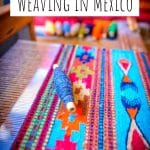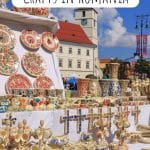A Brief History of Textiles in Peru
Peruvian textiles represent one of the most intricate and colorful chapters in the history of textiles worldwide. The story of Peruvian textiles spans thousands of years, interweaving cultural, historical, and social elements that reflect the identity and evolution of the Andean civilizations. This article delves into the historical importance, cultural significance, and various types of textiles in Peru that have defined Peruvian heritage.
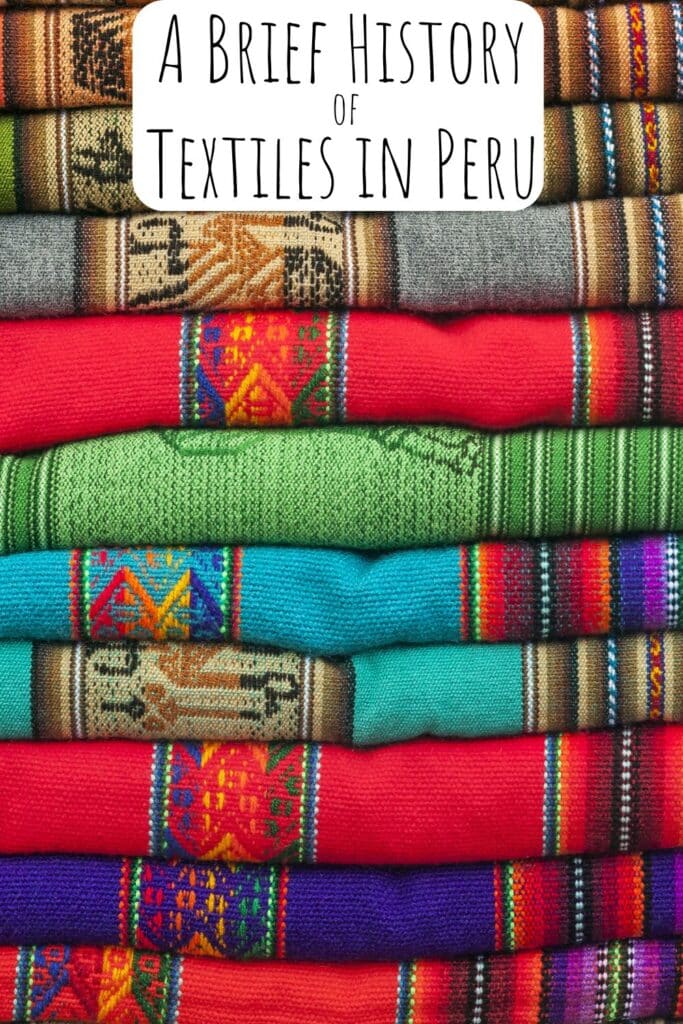
Historical Importance of Textiles in Peru
Peru’s textile tradition dates back to pre-Columbian times, with evidence of textile production as early as 2500 BCE. The ancient Peruvians were master weavers, using complex techniques and vibrant dyes long before other civilizations. Textiles were not only functional but also symbolic, serving as markers of status, identity, and even political power.
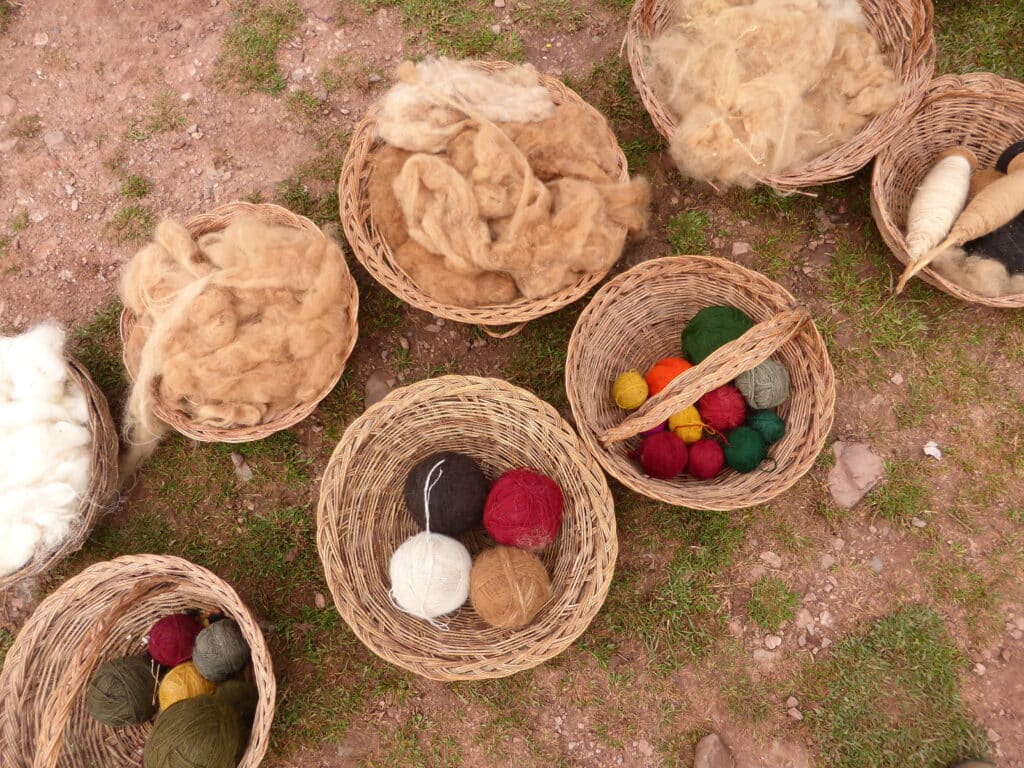
The Paracas culture (600 BCE – 200 CE) is renowned for its intricate embroideries and the use of alpaca and vicuña wool. The Paracas textiles are characterized by their elaborate designs and vivid colors, which have remarkably survived due to the arid coastal conditions. These textiles were often used in funerary practices, wrapping mummies and offering insights into the beliefs and social structures of the Paracas people.
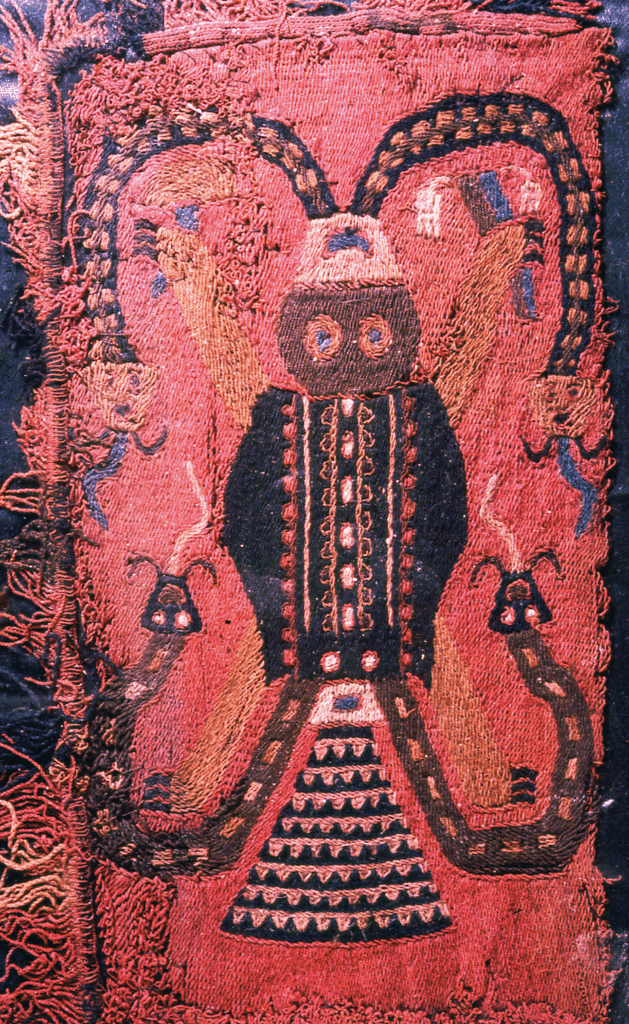
The subsequent Nazca culture (200 BCE – 600 CE) continued this tradition, but with a distinct style. The Nazca textiles are noted for their bold geometric patterns and the use of natural dyes. These textiles were also significant in religious and ceremonial contexts, often depicting mythological beings and deities.
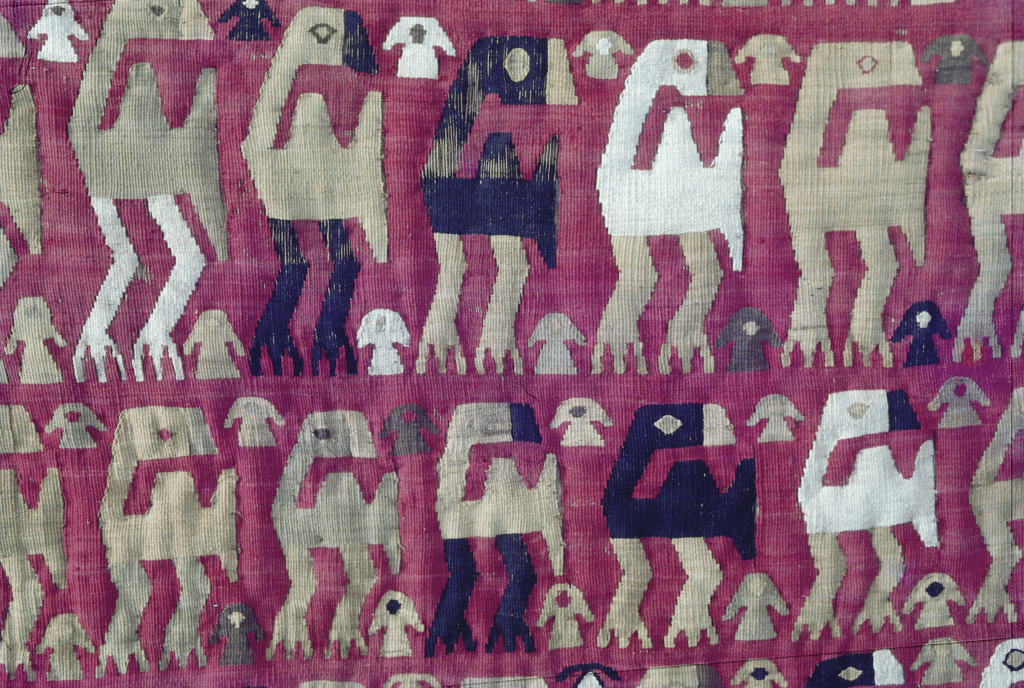
The pinnacle of textile craftsmanship in ancient Peru was achieved during the Inca Empire (1438–1533 CE). The Incas regarded textiles as more valuable than gold. They utilized a variety of materials, including cotton, alpaca, and vicuña fibers, creating textiles that were both beautiful and durable. The quipu, a unique form of record-keeping using knotted strings, exemplifies the sophistication of Incan textile techniques.
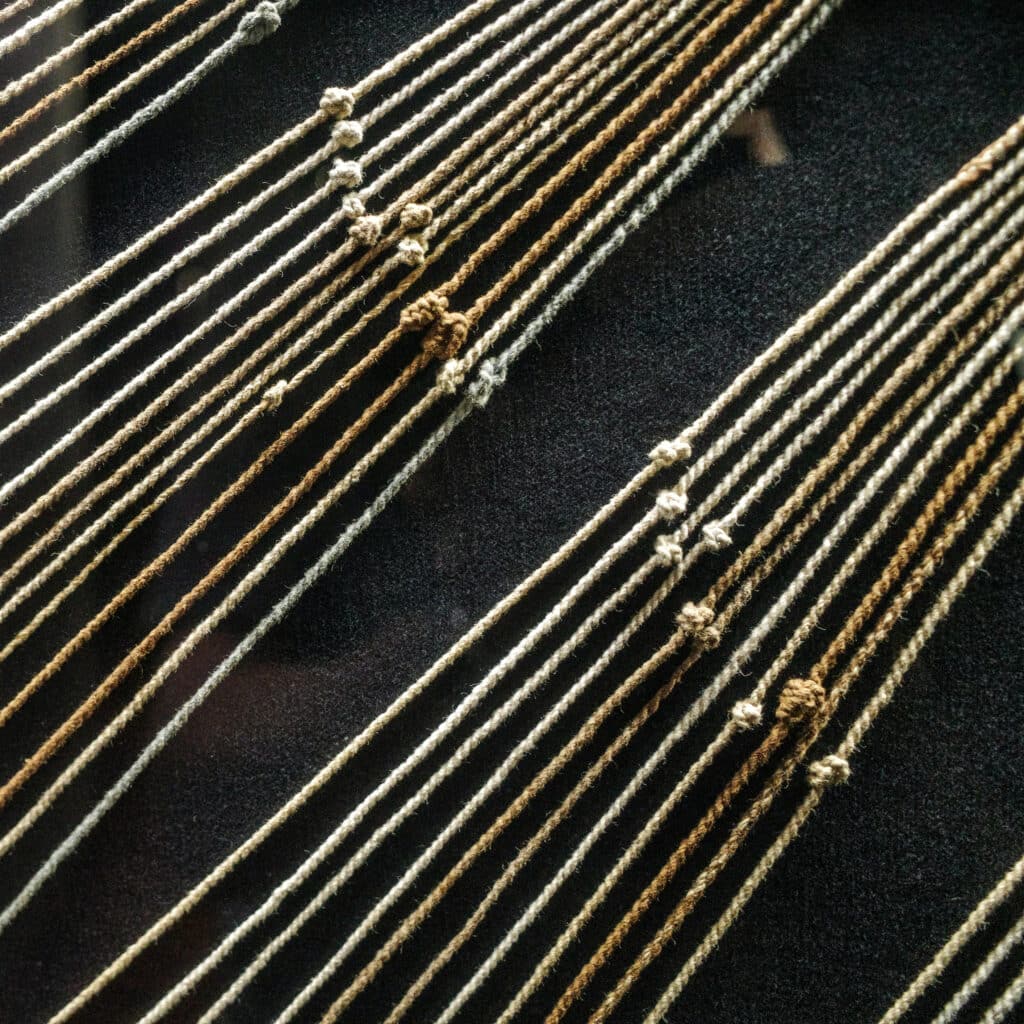
Cultural Significance
Textiles in Peru have always been deeply embedded in the cultural and social fabric of the society. They were, and still are, a medium of expression, storytelling, and identity. Each textile piece often carries specific motifs and symbols that represent various aspects of the weaver’s life, community, and environment.
In traditional Andean communities, weaving is predominantly a communal activity, passed down from generation to generation, primarily through the women. The knowledge and skills required for weaving are considered an essential part of the cultural heritage and are celebrated in various festivals and rituals.
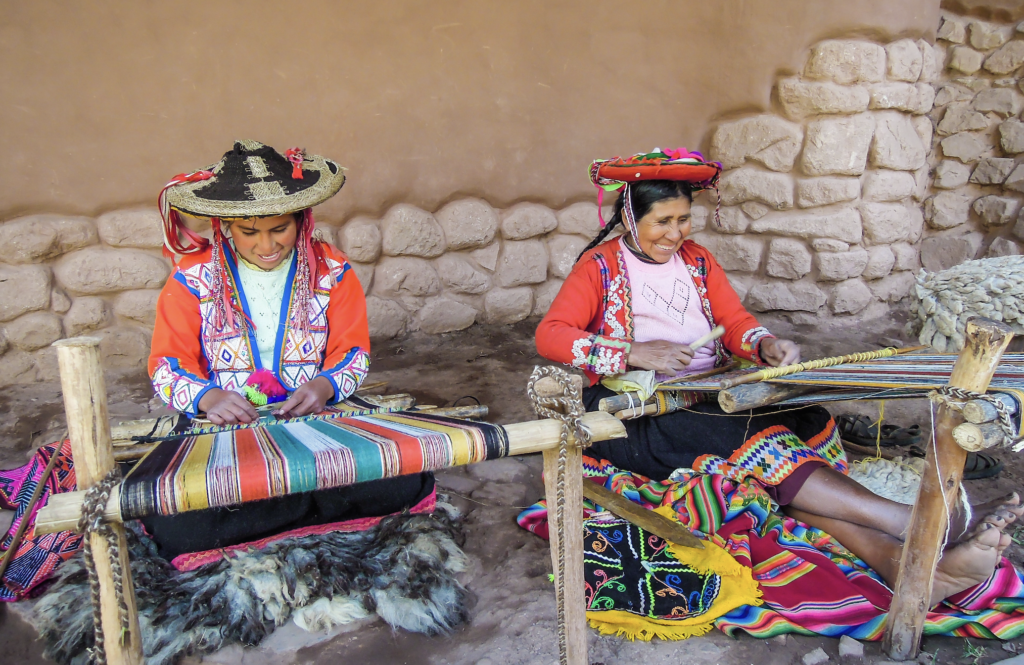
The colors and patterns in Peruvian textiles are not arbitrary. Each color holds specific meanings; for instance, red symbolizes blood and life, while black represents death and the afterlife. The patterns often depict local flora and fauna, cosmological themes, and historical events. Through these designs, textiles serve as a visual language that conveys the beliefs, values, and experiences of the people.
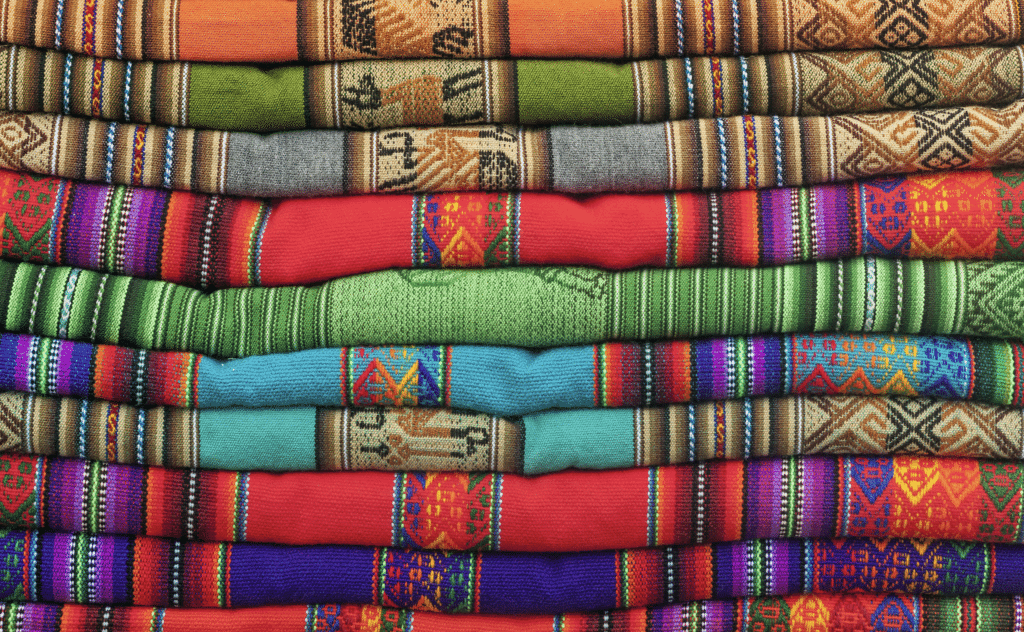
Types of Peruvian Textiles
Peru boasts a wide array of textiles, each with unique characteristics and uses. Here are some notable examples:
Awana (Weaving)
Awana is the general term for weaving in Quechua. This practice encompasses various techniques, including backstrap loom weaving, which is common in the highland regions. The resulting textiles range from everyday clothing to elaborate ceremonial garments.
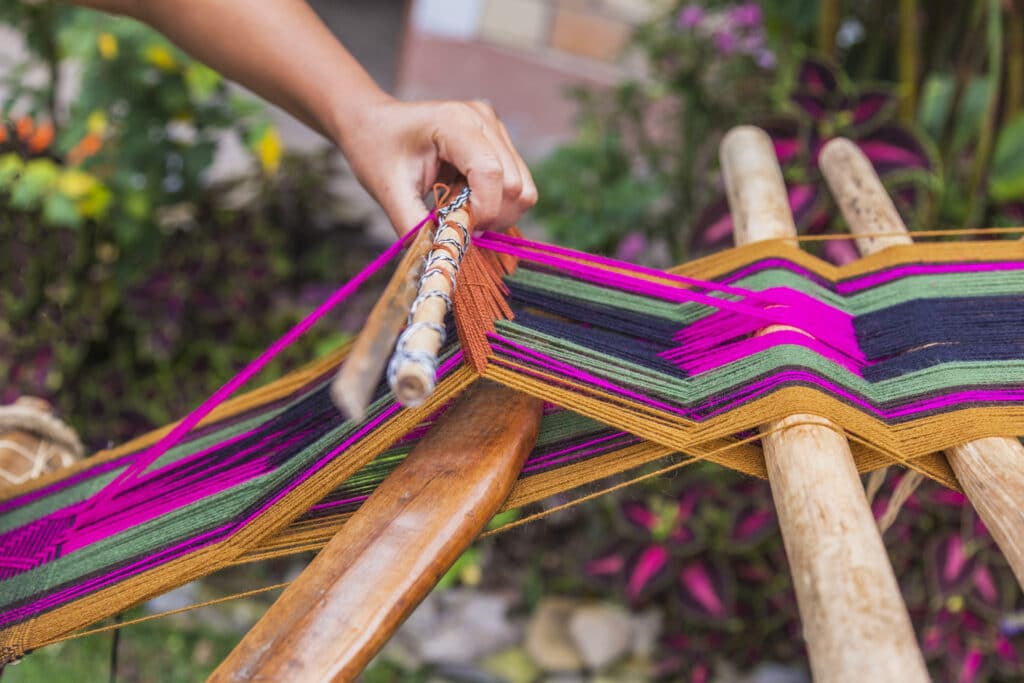
Polleras (Skirts)
Polleras are traditional skirts worn by Andean women. These skirts are often made from layers of vibrant, handwoven fabrics and are adorned with intricate embroidery. Each region has its distinctive style of pollera, reflecting local customs and traditions.
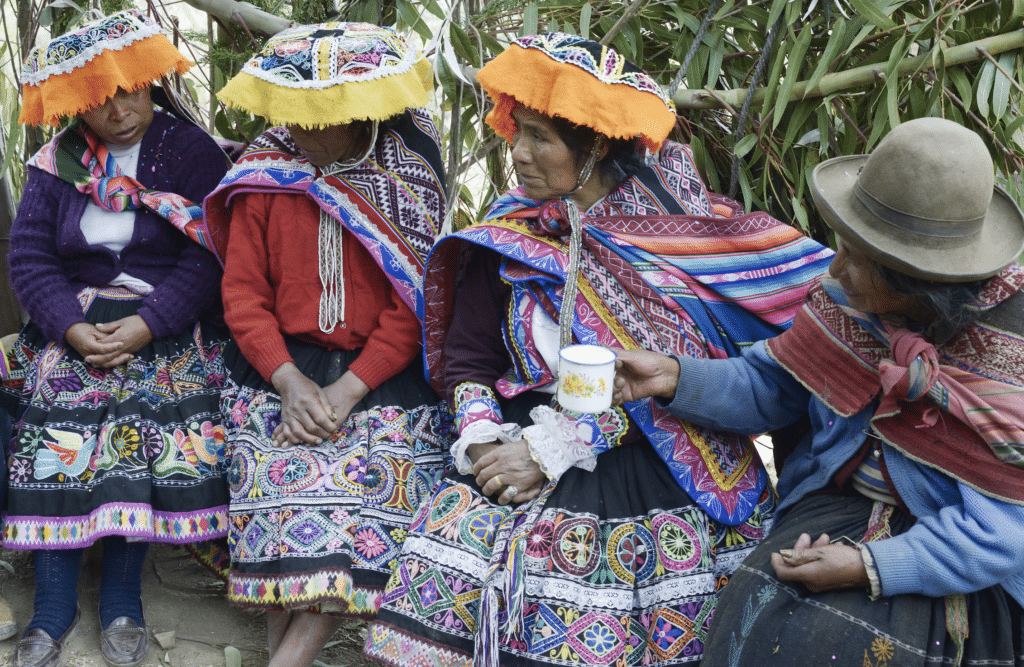
Ponchos
The poncho is an iconic garment in Andean culture, worn by men and women alike. Traditionally made from alpaca or sheep wool, ponchos are designed to provide warmth and protection against the harsh mountain climate. They are often decorated with patterns that denote the wearer’s community and status.
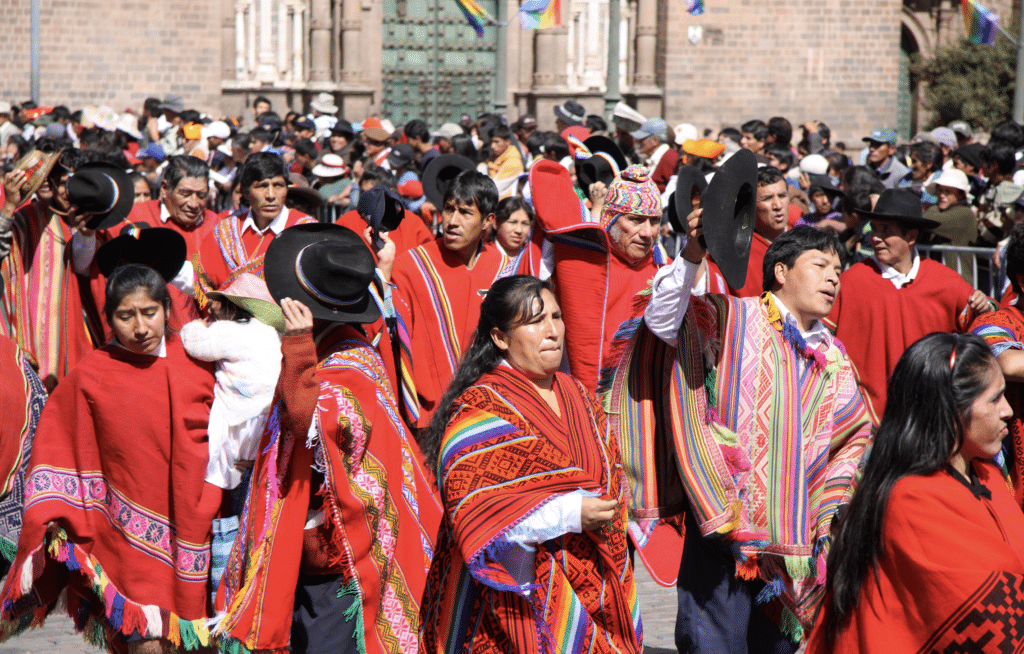
Llicllas (Shawls)
Llicllas are rectangular shawls worn by Andean women. These versatile garments are used for warmth, carrying children, and transporting goods. They are typically made from brightly colored wool and feature complex patterns that indicate the weaver’s region and heritage.
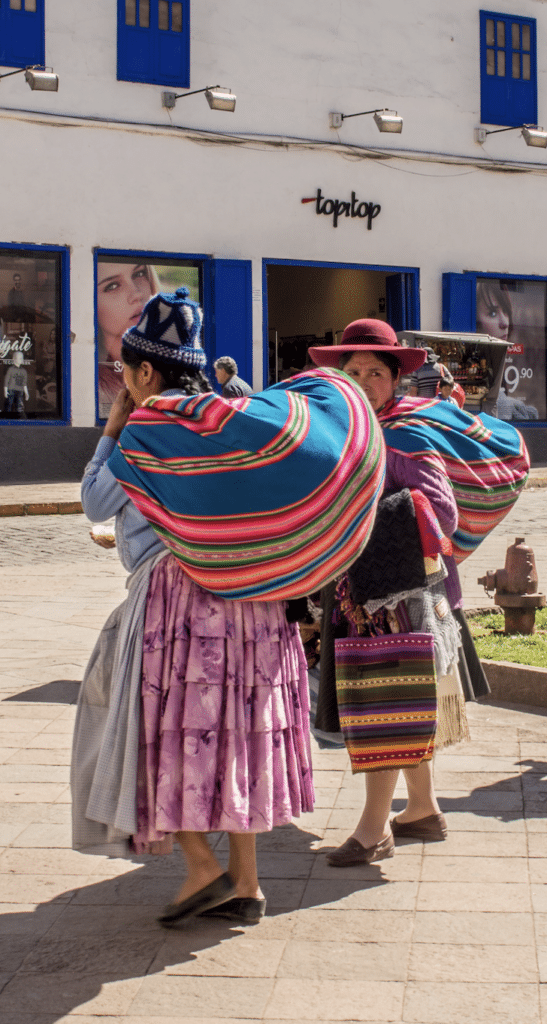
Chuspas (Bags)
Chuspas are small, handwoven bags traditionally used for carrying coca leaves. These bags are an essential accessory in Andean culture, reflecting both practical and symbolic purposes. They are often decorated with geometric patterns and symbols relevant to the weaver’s community.
Modern Influence and Preservation
In contemporary Peru, the textile tradition continues to thrive, blending ancient techniques with modern influences. Peruvian textiles have gained international recognition, celebrated for their craftsmanship and cultural depth. Organizations and cooperatives work tirelessly to preserve traditional weaving practices and support indigenous artisans, ensuring that this rich heritage is passed on to future generations.
Moreover, the tourism industry has played a significant role in the revitalization of textile production. Tourists visiting Peru often seek authentic, handwoven textiles, providing a market for traditional weavers. This economic incentive has helped sustain the practice and encourage younger generations to learn and continue the art of weaving. Museums such as Amano in Lima and Museo Larco (which offers an online textile exhibition) are gateways to textile tourism knowledge.

Destinations
For those eager to immerse themselves in the rich textile heritage of Peru, several destinations offer a firsthand experience of this ancient craft. Cusco, the historic capital of the Inca Empire, is a hub for traditional weaving. Visit the Centro de Textiles Tradicionales del Cusco to see master weavers at work and learn about the intricate techniques passed down through generations. In the Sacred Valley, explore the weaving villages of Chinchero and Pisac, where you can watch artisans create vibrant textiles using natural dyes and traditional looms. The town of Ayacucho is renowned for its exquisite tapestries and offers numerous workshops and markets where visitors can purchase unique, handcrafted pieces. For a deeper dive, head to Arequipa and the Colca Canyon region, known for its high-quality alpaca wool products. Each of these destinations provides a unique window into Peru’s vibrant textile tradition, allowing visitors to appreciate the cultural significance and exceptional craftsmanship of Andean weavers.
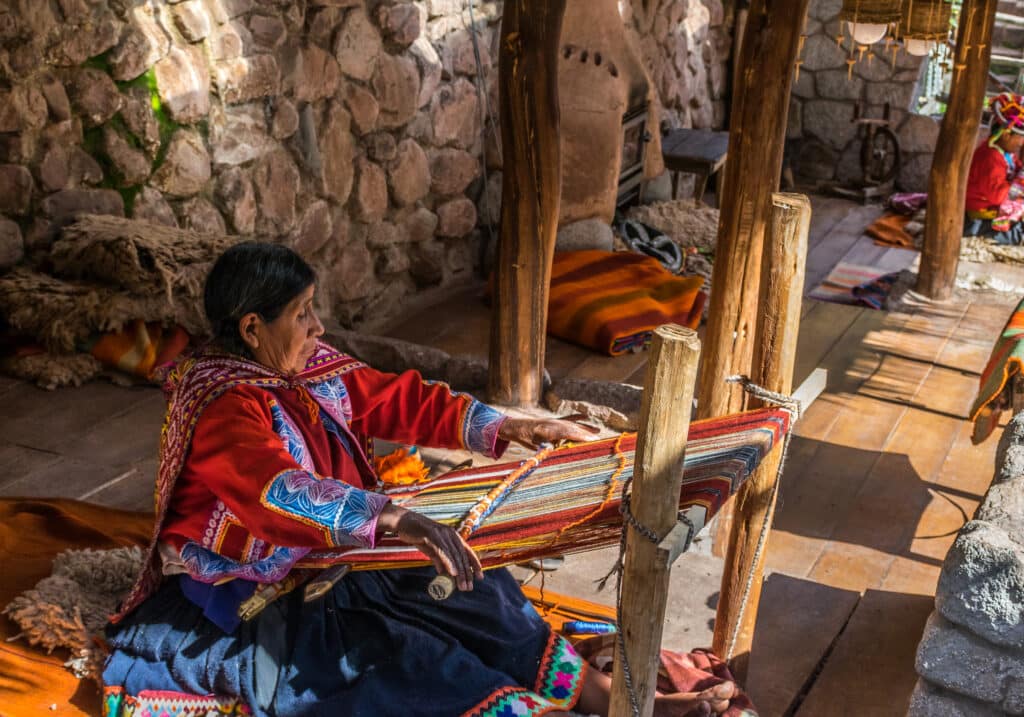
In conclusion, Peruvian textiles are a testament to the ingenuity and cultural richness of the Andean civilizations. From the ancient Paracas embroideries to the vibrant ponchos of the Inca Empire, these textiles have been integral to the social, economic, and spiritual life of the Peruvian people. Today, the legacy of textiles in Peru lives on, celebrated globally for their beauty, complexity, and profound cultural significance.
Read about weaving in Mexico, Ethiopia, and Cambodia to see how weaving differs among cultures.

